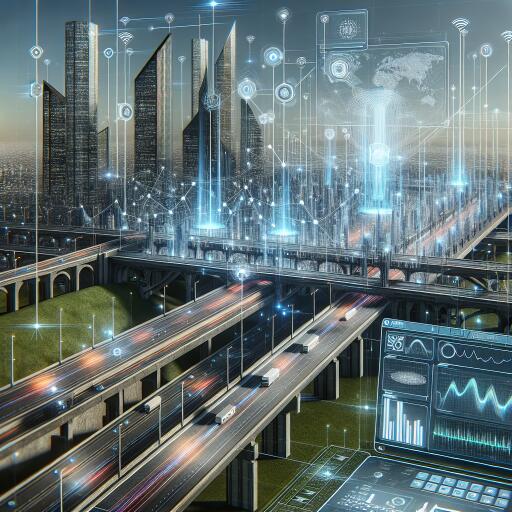The Evolution of Infrastructure Through Smart Sensors and Structural Health Monitoring
In a world where the safety and longevity of our buildings and bridges are paramount, the advent of smart sensor technology integrated into structural health monitoring (SHM) systems is revolutionizing how we care for our critical infrastructure. These advanced devices, equipped with the ability to detect, process, and communicate data, now form the backbone of modern structural safety and maintenance strategies.
Understanding Smart Sensors and Their Impact on SHM
At the core of this technological leap are smart sensors, sophisticated tools that merge detection capabilities with on-the-fly data processing and communication features. By harnessing the power of the Internet of Things (IoT), these sensors weave together intricate networks that breathe intelligence into our physical world.
SHM encompasses the integrated approach to keeping tabs on the health of infrastructure. It aims at not just ensuring structural integrity and safety but also at streamlining maintenance tasks and prolonging the durability of assets.
Traditionally, gauging the health of structures involved periodic checks and the deployment of simplistic sensors that barely scratched the surface of what was needed for comprehensive monitoring. Today, smart sensors change the game by offering real-time, continuous insights into structural conditions, allowing for immediate action against potential threats and anomalies.
Key Benefits of Implementing Smart Sensors in SHM
- Predictive Maintenance: Smart sensors stand at the forefront of predictive maintenance, a paradigm shift that moves from reacting to issues to preventing them. By meticulously analyzing data over time, these devices can forecast possible failures, facilitating preemptive repairs that minimize disruption.
- Enhanced Safety: The ability of smart sensors to deliver live updates on a structure’s status significantly bolsters safety. With immediate notifications about troubling findings, engineers can swiftly mitigate risks, averting potential disasters.
The Bright Future of Smart Sensor Technologies
The horizon for smart sensors in SHM is brimming with potential, driven by ongoing advancements in artificial intelligence (AI), machine learning, edge computing, and more. Implementing AI and machine learning into SHM systems enables the analysis of complex data patterns, pushing accuracy in predicting structural health issues to new heights. Meanwhile, breakthroughs in energy harvesting and wireless technologies are paving the way for sensors that are both more sustainable and easier to install.
An interesting development in this area is the integration of smart sensors with Building Information Modeling (BIM) systems. This fusion promises a comprehensive management approach that pairs live sensor data with detailed 3D structural models, offering an unparalleled overview of infrastructure conditions.
Conclusion
Smart sensors are transforming the landscape of structural health monitoring, ushering in an era where our infrastructure can intelligently communicate its condition, ensuring safety and efficiency. As technology progresses, the integration of these sensors into SHM will become increasingly central in building a resilient and sustainable future for our built environment.
Join the conversation on the evolution of smart infrastructure and stay abreast of the thrilling advancements that lie on the horizon for structural health monitoring and beyond.









